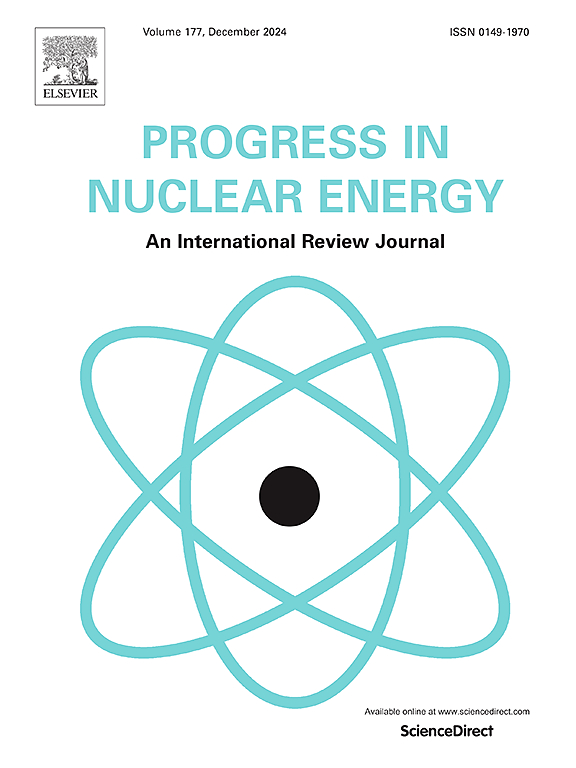Modeling of the decomposition of iodine oxides aerosols (IOx) in the containment - Consequences on the understanding of volatile iodine behaviour in the containment
IF 3.3
3区 工程技术
Q1 NUCLEAR SCIENCE & TECHNOLOGY
引用次数: 0
Abstract
Iodine oxides aerosols (IOx) are fine aerosol particles that are formed in a reactor containment in case of severe accident. Their stability was studied under irradiation in representative conditions of the containment. Under the influence of the temperature, humidity and irradiation they are found to be unstable. Their decomposition kinetics and stability are studied in EPICUR facility thanks to the STEM, STEM2 and MIRE projects. An IOx decomposition model is set up in ASTEC-SOPHAEROS code (version 3.1). It considers the influence of the humidity, the temperature, and dose rate. Its application to the PHEBUS FPT-0/1/2/3 tests lead to (1) an improved modeling and understanding of the inorganic iodine volatility in the FPT-3 containment all along the transient and to (2) an improved modeling after the washing when the gaseous temperature increases (FPT-0 and FPT-1) and (3) before the washing when the humidity decreases (FPT-2) as long as a relevant molar gaseous iodine fraction coming (xI2_RCS) from the reactor coolant system (RCS) is set up for FPT-0/1/2. A sensitivity analysis indicates that values of xI2_RCS up to ≈30% would be needed to improve the modeling of iodine volatility before the washing for FPT-0/2. A fraction of 10% would be more appropriate for FPT-1. A complementary approach is on-going to quantify the influence of the uncertainties of each chemical model developed in ASTEC-SOPHAEROS code within the objective to identify which chemical phenomena are the most influent on iodine volatility in the PHEBUS containment.

求助全文
约1分钟内获得全文
求助全文
来源期刊

Progress in Nuclear Energy
工程技术-核科学技术
CiteScore
5.30
自引率
14.80%
发文量
331
审稿时长
3.5 months
期刊介绍:
Progress in Nuclear Energy is an international review journal covering all aspects of nuclear science and engineering. In keeping with the maturity of nuclear power, articles on safety, siting and environmental problems are encouraged, as are those associated with economics and fuel management. However, basic physics and engineering will remain an important aspect of the editorial policy. Articles published are either of a review nature or present new material in more depth. They are aimed at researchers and technically-oriented managers working in the nuclear energy field.
Please note the following:
1) PNE seeks high quality research papers which are medium to long in length. Short research papers should be submitted to the journal Annals in Nuclear Energy.
2) PNE reserves the right to reject papers which are based solely on routine application of computer codes used to produce reactor designs or explain existing reactor phenomena. Such papers, although worthy, are best left as laboratory reports whereas Progress in Nuclear Energy seeks papers of originality, which are archival in nature, in the fields of mathematical and experimental nuclear technology, including fission, fusion (blanket physics, radiation damage), safety, materials aspects, economics, etc.
3) Review papers, which may occasionally be invited, are particularly sought by the journal in these fields.
 求助内容:
求助内容: 应助结果提醒方式:
应助结果提醒方式:


